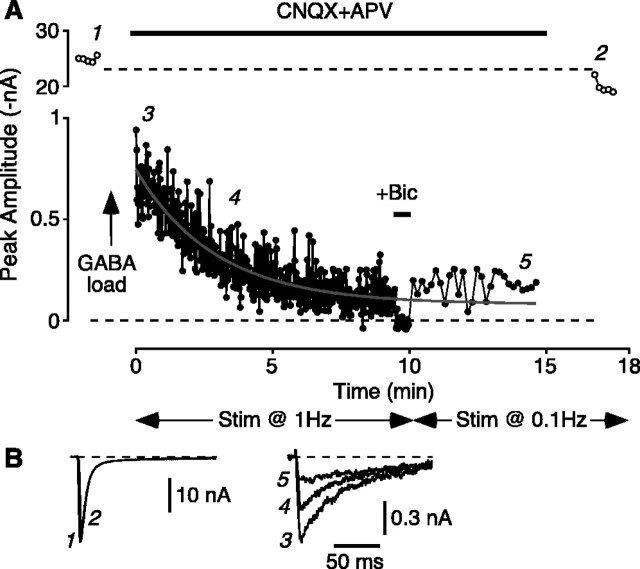Figure 6.
The amplitude of the postload IPSC irreversibly runs down with time, reflecting the passage of loaded GABA through the synaptic vesicle cycle. A, Plot of amplitude versus time for a typical experiment. The native EPSC amplitude was initially ∼25 nA [points near “1;” stimulus (Stim) rate 0.1 Hz]. After loading (40 mm K+, 100 mm GABA for 30 s), the cell was bathed in normal external solution containing CNQX plus d-APV to isolate the postload IPSC and then stimulated at 1 Hz (0-10 min). The amplitude of the IPSC declined exponentially [superimposed fit of a single exponential plus an offset; τ = 152 s; baseline confirmed by addition of bicuculline (+Bic)]. The stimulus rate was then reduced to 0.1 Hz (10-15 min) to confirm that the reduction in IPSC amplitude was irreversible and not simply caused by temporary exhaustion of the readily releasable pool of synaptic vesicles at the higher stimulation rate. Finally, the CNQX plus d-APV was washed out, confirming that the native EPSC was unchanged in amplitude (points near “2”). B, Single synaptic currents recorded near the numbered time points in A.

